Beware of half truths — because you may be holding the wrong half. After having seen and read so much about the Sohrabuddin episode in the last five years, one might believe one knows it all. Sohrabuddin is now cast as an innocent victim of police excess.
However, it would be worthwhile to explore the real facts about Sohrabuddin, the nature of police encounters, and the real issues at stake. Sohrabuddin was an underworld gangster who was involved in nearly two dozen serious criminal offences in states of Gujarat, Rajasthan, Madhya Pradesh and Maharashtra. He maintained transnational links with anti-India forces from the early ‘90s onwards, until his death in 2005. Working with mafia dons like Dawood Ibrahim and Abdul Latif, he procured weapons and explosives from Pakistan and supplied them to various terrorist and anti-national groups (had it not been for his activity, at least some terrorist acts could have been averted). Sohrabuddin was solidly entrenched in the criminal world for a decade-and-a-half. Around the time he was killed, the Rajasthan government had announced a reward on his head. In 1999, he had been detained under the National Security Act by the Madhya Pradesh government.
In a 1994 case investigated by the Ahmedabad crime branch, he was co-accused along with Dawood Ibrahim and convicted for five years, for waging war against the Government of India, planning an attack on the Jagannath Rath Yatra in Orissa, and other offences under the IPC, Arms Act, etc. During the investigation, 24 AK-56 rifles, 27 hand grenades, 5250 cartridges, 81 magazines and more were seized from his family home in Madhya Pradesh. In 2004, a fourth crime was registered against him by Chandgad police station of Kolhapur district in Maharashtra under sections 302, 120 (b), and 25 (1) (3) of the Arms Act, for the killing of Gopal Tukaram Badivadekar. As fear of him often silenced people from reporting his whereabouts, let alone deposing against him, the Rajasthan government had to announce a reward on his head after he killed Hamid Lata in broad daylight in the heart of Udaipur, on December 31, 2004. So much for Sohrabuddin’s innocence.
However, irrespective of who Sohrabuddin was and what he did, the use of unaccountable force against him is indefensible is the public view of many (often at variance with their private view). There are many who feel that there is a higher rationale for such actions in compelling circumstances, as the law of the land has repeatedly found itself helpless in dealing with individuals bent on bleeding the country. Their argument, that the rule of law is a means to an end and not an end in itself, often finds support in the jurisprudential principles of salus populi est suprema lex (the people’s welfare is the supreme law) and salus res publica est suprema lex (the safety of the nation is supreme law). Even the Supreme Court of India, in the case of D.K. Basu vs. State of West Bengal [1997 (1) SCC 416] accepted the validity of these two principles and characterised them as “not only important and relevant, but lying at the heart of the doctrine that welfare of an individual must yield to that of the community.” The validity of the principles of salus populi est suprema lex and salus res publica est suprema lex could have been part of an enlightened national discourse, and what could be the governing instrumentalities, empowerments, legal checks and stringent processes if these principles were to be invoked. It is better to accept reality as it is and then strive to change it for the better, rather than what we wish it to be. Feigned ignorance is the worst type of hypocrisy.
But there is another vital question that needs to be addressed. While pursuing the Sohrabuddin case, was the government really serious about stopping the menace of fake encounters, or was it pursuing a different agenda? Encounters have been taking place all over the country under all regimes, at times degenerating into what are called fake encounters. Between 2000 and 2007 there have been 712 cases of police encounters in the country with UP topping the list at 324, and Gujarat figuring almost at the bottom with 17.
In some of the cases there was not much on record, even to establish the criminal past of those killed. Settling political scores through security and investigative agencies like the CBI is not only bad politics, but also destructive for the nation’s security. To convey the impression (explicitly or implicitly) that Sohrabuddin was targeted for belonging to a particular community, thereby creating a sense of insecurity in a section of society, is detrimental to national interests. It is little known that a large number of Sohrabuddin’s victims were Muslims while a good number of his closest associates (including Tulsiram Prajapati, who was also killed in a similar encounter), were Hindu. William Blake could not have been more right when he said that “a truth that is pursued with bad intent beats all the lies you can invent”.
The other negative impact of the Sohrabuddin case is the impression it is creating that all encounters in which police and security forces are involved, are fake. Society needs to be reassured that the majority of encounters are genuine and mostly in response to murderous attacks on security personnel. The fact that, on average, over 1,200 policemen get killed every year grappling with terrorists, insurgents, underworld mafia and other anti-social elements, bears ample testimony to this fact. Playing up a few aberrations and blowing them out of proportion and presenting them as the only truth is not in the national interest.
The other downside of the publicity around such cases is that it erodes the people’s trust in governance. Administrations begin to be seen as instruments of repression and self-aggrandisement and politicians as perceived as manipulating their power for political and personal gains. This erosion can lead to a dangerous delegitimisation of the polity. Democratic politics is an exercise in regime-legitimisation, and to lose the confidence of the governed would set the government on a self-destructive path.
The writer is former director of the Intelligence Bureau

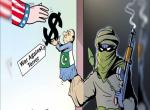
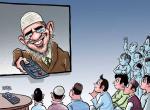
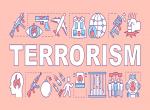
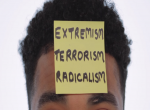
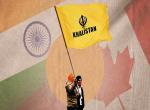



Post new comment